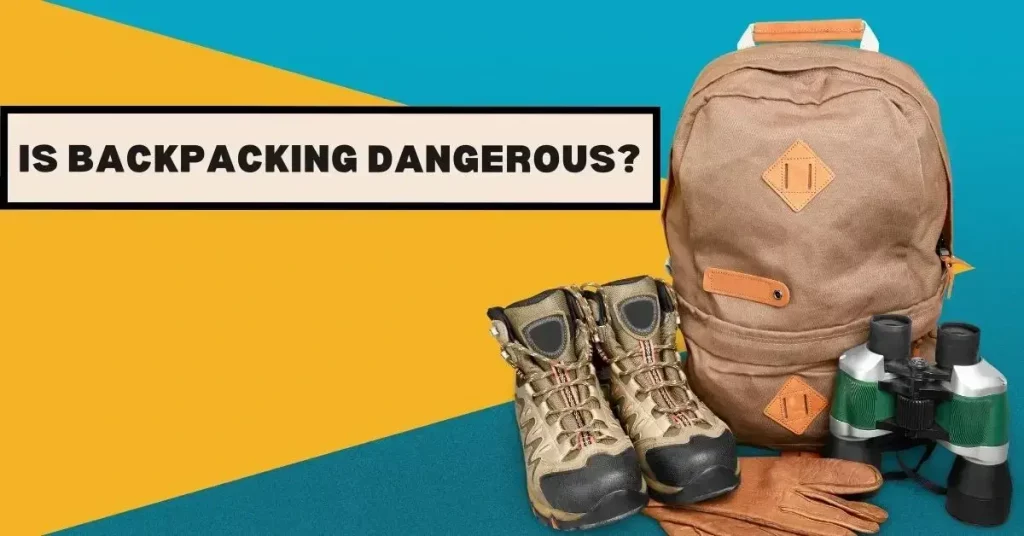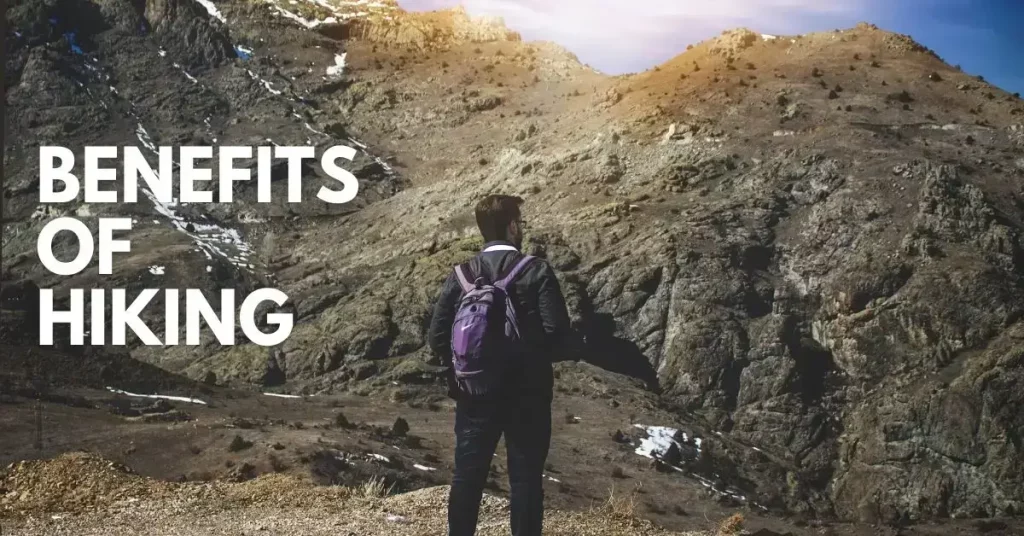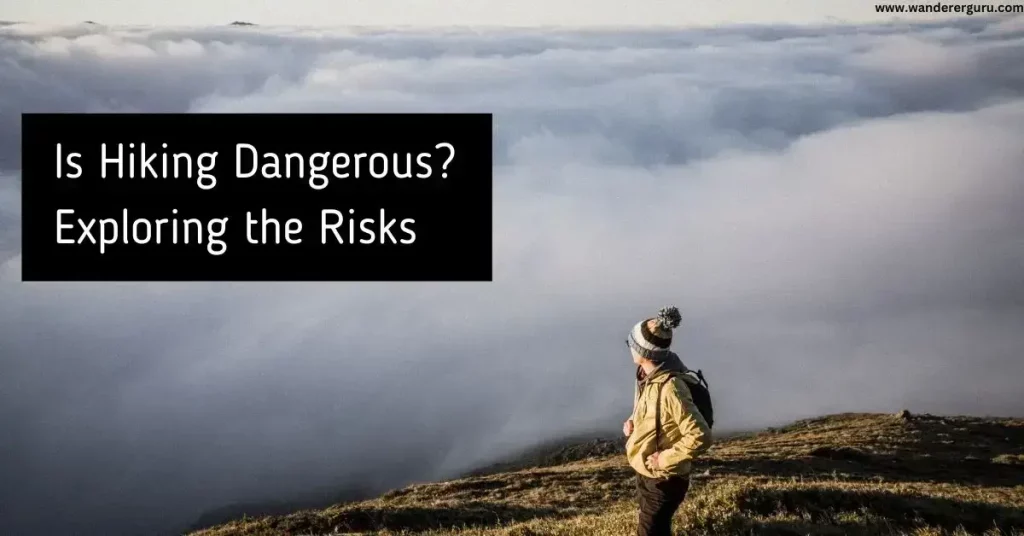Is hiking dangerous? This is a common question that arises when contemplating outdoor adventures. Hiking, like any outdoor activity, comes with inherent risks. However, with proper preparation and awareness, these risks can be minimized. That allow hikers to enjoy their time on the trails safely. It’s important to accept that hiking may involve some level of danger. Butmost hikes are completed without incident. It’s crucial to approach hiking with respect for nature and a commitment to safety.
In this article, we will explore the risks associated with hiking and discuss essential safety measures to reduce these risks. So, lace up your boots and delve into the hiking world!
Dangers of Hiking Alone
Hiking alone can be a rewarding and reflective experience, but it also presents unique challenges and risks. One of the primary dangers of hiking alone is the lack of immediate support in an emergency. A sprained ankle, getting lost, or encountering wildlife can become more risky. If there’s no one around to provide support or seek help. You should inform someone about your hiking plans, carry essential safety gear, and stick to well-marked trails when hiking alone.
Bonus:
HOW TO BE SAFE WHILE CAMPING ALONE?
Dangers When Hiking in the Mountains?
Hiking in mountainous terrain introduces more hazards and risks than walking in lower-elevation areas. The unpredictable weather conditions, steep slopes, and rugged terrain can cause challenges even for experienced hikers. Some common dangers when walking in the mountains include:
- Altitude Sickness: As you climb to higher elevations, the air becomes thinner, and the oxygen levels decrease. Altitude sickness can occur, causing symptoms such as headache, nausea, and fatigue. Because of that adapting properly, staying hydrated, and descending if symptoms worsen are crucial.
- Rockfalls and Avalanches: Mountainous regions are prone to rockfalls and avalanches, especially during certain seasons or bad weather conditions. Staying informed about the current weather forecast, avoiding avalanche-prone areas, and wearing appropriate safety gear can help reduce these dangers.
- Extreme Temperatures: Mountain environments often experience extreme temperature fluctuations. Hikers must be prepared for sudden temperature drops, even during summer months. Carrying warm clothing, extra layers, and a reliable, weatherproof jacket is essential.
Is Backpacking Dangerous?

Backpacking, which involves hiking while carrying all necessary gear and supplies on your back for multiple days, presents its challenges. While it can be a thrilling and rewarding adventure, backpacking carries certain risks:
- Weight and Fatigue: Carrying a heavy backpack for long distances can lead to fatigue and strain on your body. Packaging efficiently, distributing the weight evenly, and training physically to build stamina before start on a backpacking trip are essential.
- Exposure to the Elements: Backpacking often occurs in remote areas, where access to immediate help may be limited. The bad weather conditions, such as storms or extreme heat, can cause serious risks and make the journey more challenging. It’s crucial to check weather forecasts beforehand, carry appropriate gear for different weather scenarios. Also prioritize safety over the desire to continue hiking in unfavourable conditions.
- Navigational Challenges: Backpacking trips often involve traversing unfamiliar territory and navigating without clear trail markers. Getting lost or disoriented can be dangerous, especially in remote areas. It’s essential to carry a detailed map, compass, or GPS device and develop basic navigation skills to ensure you stay on the right path.
Bonus:
HOW TO KEEP FOOD FROM FREEZING WINTER CAMPING?
Hazardous Environmental Factors in Hiking
Hiking exposes individuals to environmental factors that can pose hazards if not taken seriously. Understanding and mitigating these factors are essential for a safe hiking experience. Some common hazardous environmental factors in hiking include:
- Extreme Temperatures: Extreme temperatures can be dangerous, whether scorching heat or cold. Heat exhaustion, heatstroke, Hypothermia, and frostbite are real risks. It’s crucial to dress appropriately for the Weather, stay hydrated, and take breaks in shaded or sheltered areas when necessary.
- Wildlife Encounters: While wildlife encounters on hiking trails are relatively rare, knowing how to react if you encounter animals is essential. Research the wildlife in the area you’ll be hiking in, understand their behaviour, and practice proper wildlife etiquette. Keep a safe distance, avoid feeding or approaching animals, and carry bear spray or other deterrents if necessary.
- Terrain and Falls: Uneven terrain, slippery surfaces, and steep slopes can lead to slips, trips, and falls. It’s essential to wear appropriate footwear with good traction, use trekking poles for stability, and exercise caution when navigating challenging terrain. Stay on designated trails to minimize the risk of accidents.
Risk Reduction Strategy in Hiking
Minimizing risks and maximizing safety should be a priority when venturing into the great outdoors. Here are some risk-reduction strategies to help you stay safe while hiking:
- Research and Planning: Thoroughly research your hiking destination, including the trail difficulty, weather patterns, and potential hazards. Plan your route accordingly, considering your fitness level and experience.
- Stay Informed: Keep yourself updated with the latest weather forecasts and trail conditions. Check with local authorities, park rangers, or hiking clubs for warnings, closures, or safety advisories.
- Hiking in Groups: Hiking in a group can enhance safety by providing mutual support and assistance. Join hiking clubs or organize hikes with friends. However, ensure that the group size remains manageable to minimize environmental impact and avoid overcrowding.
- Leave No Trace: Practice Leave No Trace principles to minimize environmental impact. Pack out all trash, stay on designated trails, and respect wildlife and vegetation. Leave nature as you found it for future hikers to enjoy.
- Navigation and Communication: Carry navigational tools such as maps, compasses, or GPS devices to prevent getting lost. Ensure your smartphone is fully charged, and consider investing in a satellite communication device for remote areas with limited cellular coverage.
- Know Your Limits: Be honest about your fitness level and hiking experience. Choose trails that align with your abilities and gradually increase the difficulty as you gain experience. Avoid pushing yourself beyond your limits, as it can increase the risk of accidents.
Remember, hiking should be an enjoyable and rewarding experience. Taking appropriate measures to reduce risks will help ensure your safety and allow you to appreciate nature’s beauty fully.
Benefits of Hiking

While hiking has its share of risks and challenges, its benefits are numerous and worth experiencing. Here are some of the critical benefits of hiking:
- Physical Fitness: Hiking is an excellent form of exercise that engages various muscle groups and improves cardiovascular health. It helps strengthen your legs, core, and lower body, improving endurance, balance, and overall fitness.
- Mental Well-being: Spending time in nature and engaging in physical activity has been shown to reduce stress, anxiety, and depression. Hiking allows you to disconnect from the demands of daily life, clear your mind, and enjoy the therapeutic benefits of being in natural surroundings.
- Connection with Nature: Hiking provides a unique opportunity to connect with nature, appreciate landscapes, observe wildlife, and experience the serenity of natural environments, fostering awe, gratitude, and a deeper environmental understanding.
- Social Interaction: Hiking can be a social activity, providing an opportunity to bond with friends, family, or fellow hikers. It allows for shared experiences, memorable adventures, and the chance to create lasting connections with like-minded individuals.
- Improved Cognitive Function: Research suggests that spending time in nature can enhance cognitive function, attention span, and creativity. Hiking stimulates the brain by exploring new environments, problem-solving during challenging trails, and engaging with the natural world.
- Fitness Customization: Hiking offers various trails and terrains suitable for different fitness levels and preferences. Whether you prefer a leisurely walk through a scenic park or a challenging ascent to a mountain peak, there is a hiking experience to suit your individual needs and goals.
- Environmental Awareness: Immerse yourself in nature to appreciate Earth’s beauty and fragility, while hiking promotes ecological awareness and responsible behaviors for future habitat preservation. For more ideas, visit my Pinterest.
Conclusion
In conclusion, while hiking can involve certain risks, it is not inherently dangerous when approached with proper preparation and caution. You can mitigate potential hazards by conducting thorough research on the trail, checking weather conditions, carrying appropriate gear, and informing others about your plans. Maintaining physical fitness, staying hydrated, and being aware of your surroundings contribute to a safe hiking experience. Remember, being prepared and exercising common sense are essential for enjoying the beauty of nature while minimizing risks associated with hiking.
FAQs
Q.1 Is hiking dangerous for beginners?
Ans: Hiking can be enjoyed by beginners with proper preparation and choosing suitable trails. Start with more accessible hikes and gradually increase the difficulty level as you gain experience.
Q.2 Do I need special equipment for hiking?
Ans: While basic hiking gear is essential, such as sturdy footwear, appropriate clothing, and a backpack, the specific equipment required may vary based on the trail’s difficulty and environmental conditions. Research and prepare accordingly.
Q.3 Are there any age restrictions for hiking?
Ans: Hiking can be enjoyed by people of various age groups. However, specific trails or activities may have age restrictions or recommendations. Choose routes suitable for your fitness level and consult with professionals if needed.
Q.4 What should I do in an emergency during a hike?
Ans: Stay calm, assess the situation, and call for help if you have reception or utilize any emergency communication devices you have. Move to a safe location and provide accurate details about your site to the authorities.
Q.5 What should I do if I encounter wildlife while hiking?
Ans: Maintain a safe distance, do not feed or approach animals, and respect their natural habitat. Familiarize yourself with wildlife behaviour and learn how to react in different situations.
Bonus:

